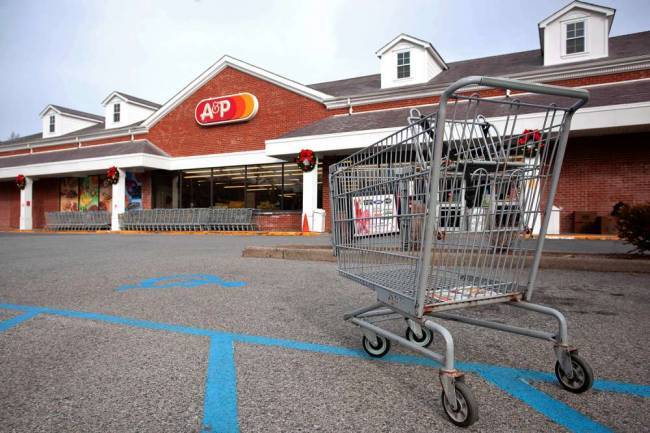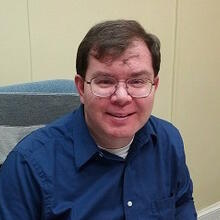Before anyone gets all worked up about this blog’s title and rushes to “Google” atychipobia (or, if you’re of baby boomer vintage, like yours truly, reaches for that trusty and ever-available Webster’s Collegiate), I will save you the trouble. This word (as defined by Wikipedia) is the “abnormal, unwarranted, and persistent fear of failure,” which can have “particularly devastating…effects on a person’s willingness to attempt certain activities” or “subconsciously undermine their own efforts so that they no longer have to continue to try.” Whew! And I was afraid I wouldn’t be able to make the attempt to write this first paragraph!
There were a number of articles over the last weekend that came to my attention as I was perusing the Sunday newspapers. They were disparate articles with different emphases and aspects; they were about baby boomers, millennials, fear, failing, and the likely end of that iconic brand of American businesses, the A.&P. They were all topics that I have an interest in and are familiar with (in varying degrees), especially the last one, which, in reading about it, triggered an tsunami of emotions and memories of my earlier life growing up in the Bronx, and of life in general.
The headline in the Aug. 8 edition of The New York Times, just glared at me: “A. & P. Bankruptcy Means New York, Chain’s Birthplace, Will Lose Last Store.” The article detailed how the once-fabled grocery-store chain, really an icon of Americana and American business history, had fallen upon hard times, due to the economy and competition from “high-end” and (you’ve got to admit) more fashionable food markets that have cropped up in recent years (which shall remain nameless for the purposes of this blog). The article stated that the chain filed for a second bankruptcy in five years (the first being in 2010) and was in the process of liquidating its holdings. To put it in stark relief, the article had an accompanying photo of the very last A&P in the City of New York, on Riverdale Avenue in the Bronx—the place of my memories and growing-up.
Reading about the A.&P. brought me back to when life was good, uncomplicated and simple: back to grade school days when my universe consisted of the swings and slides of Devoe Park, the apartment buildings along University Avenue, Dolan’s Drug Store, the German butcher shop around the corner from the candy store, the St. Nicholas of Tolentine Church complex of church, grammar and high schools, the rectory (which had 12 Augustinian priests in residence, with Masses on the hour every hour every weekend and fully packed in the upper and lower churches—truly and sadly a thing of the past, given all the recent spate of church closures and consolidations) and two convents (grammar and high school) and of course, McCabe’s funeral home that was right next door to Dolan’s drug store.
We kids used to joke that having the drug store and the funeral home so close together was a kind of poetic justice: you either had one-stop popping or one-stop dropping with the church across the street to steer you heavenward…and the A.&P. that had their Yukon soda brand (of all varieties, orange and grape being the summer favorites), their famous green-stamp books, and for the discriminating coffee palate, the coffee grinders that lined the end of every check-out counter as a courtesy so that customers could have their “8 O’Clock” A&P brand of coffee freshly ground, the aroma of which wafted through the doors all day long and made you just raving mad for a cup, even if you weren’t particularly a java junkie, especially for those lace-curtain Irish tea-drinkers that inhabited the neighborhood…and the curmudgeonly store manager, Mr. Gallagher, crouching about like a Churchillian bull-dog he was (and looked like), making sure no kid—or adult—messed around with his palatial food kingdom, where he reigned supreme.
Yes, the A. & P. story attracted my attention and my reveries. But as I was reading and perusing through the papers, there were other stories that were equally riveting, yet even more serious and they involved the next generation—the “millennials.” Every new generation gets frowned upon by their “oldsters”; mine was no exception and I must admit—or rather, confess—that I have begun to view things through gimlet eyes, whether situations or people apart from my own cohorts (to put it in a more clinical, sociological terms). However, I do remember very well when the “older people” would view my generation with everything from befuddled bemusement to outright contempt. So contrary to what the millennials I know and work with may think, I know what it’s like to be judged unfavorably or to be treated with something akin to disdainful irrelevance because of my position in the pecking order of life: “the already there, but not yet” group.
The two articles on millennials that caught my attention also came from The New York Times, though on different days: “Suicide on Campus and the Pressure of Perfection” 7/27 (in the Education Life section) and “We’re Making Life Too Hard for Millennials” (Sunday Review section, 7/31). Both articles, however, were published in the Sunday 8/2 editions of The Times. I was struck by these articles that were published in the same day’s paper, though in different sections. Along with the story on the A. & P., they all had one thing in common: not only the fear of the future, but about an even greater fear, the fear of failing or of having failed.
In other times and another context, John F. Kennedy once said that change always disturbs, that life is not fair, that there at those who are healthy and those who are not well, those who travel and those who do not, those who go to war and those who do not come home. What President Kennedy said came to mind as I was reading these articles, disparate as they were, yet they involved the future of the young, who they are and what they hope to be—and the very real fears and pressures they face (which they oftentimes do not reveal, either through embarrassment, hubris, or both). It is very easy for some to be airily dismissive of such concerns; it is the grown-up’s hubris of those who are fortunate enough to have earned a place in the world for themselves so that they can afford to put their youth behind them, along with their fears, worries and concerns, if they ever had them. For those of us who have never forgotten—and who have had the opportunity to read these articles—it is bracing reading.
It is bracing reading because it brings to the fore that part of the human condition we all share and have in various forms throughout our lives: fear (whatever kind it may be) and the fear of not measuring up, the fear of failing or not meeting expectations, of one’s own, or of others’. That kind of fear we all have, from childhood on, through adolescence, through young adulthood and even adulthood itself. For the most part, we navigate those seas fairly well, without any lasting scars or bruises. We “roll with the punches,” so to speak; with understanding and perspective that living life provides us, we are usually able to come through such fears and uncertainties relatively unscathed. But for some—that is, particularly for those who are just starting out, this navigation can be a journey through some very choppy waters where the demands and responsibilities of life can become overwhelming and not a little threatening, and that’s what these two articles describe—and why it is so necessary for all us—whatever our age—remember our own experiences before we pass judgment on those who are undergoing such experiences for the first time, and hopefully, not the last.
It is painful to read about the struggles young people face, especially of those of today’s generation. There are the rare few who “have it altogether” and have no worries on that score. Blessed are they—but for all the others (and truth to tell, not a few of us in our own time) have had to deal with some very real pressures, which, to some unsympathetic “adults” basically amount to much ado about very little. The pressures can become so great that for some, suicide is the only way out of a painful dilemma: the pressure to succeed. As the Education Life article by Julie Scelfo, states, “the suicide rate among 15-to 24-year olds has increased modestly but steadily since 2007: from 9.6 deaths per 100,000 to 11.1, in 2013…”
Because of these pressures, more and more students are suffering from anxiety, depression as well as other psychological problems. How bracing and tragic this is. And in the other article, (by a Wall Street executive named Steven Rattner), the author argues that the “Baby Boomer’ generation (the children of the “Greatest Generation”), has failed the “millennial” generation (the most educated of all) in that the conditions that exists today are basically constricting “their ability both to maintain a reasonable lifestyle and to save for the future.”
If you took out the word “millennials,” what has been written about in these articles could very well describe anyone and their particular state of life. In these days, we are all feelings pressures of some sort and at times, they can seem unbearable, causing us to have feeling of great fear and failure. We can be the young student at college (or high school), worrying about grade point averages or we can be the pensioner in Greece, lining up outside the bank worrying whether our life savings have been wiped out, or we can be an A. & P. executive/employee, worrying about what is to come.
As JFK said, change always disturbs. It is not easy; it never is. But change is the event that we call life—no one is immune from it. Whoever we are—and whatever age we are—we should have understanding, empathy and support for one another when facing such situations. And for those of us who are fortunate to have a faith that tells us that better things will come, not just in this life but in our eternal life to come, we will always have grounds for hope—even for those of us who remember those long-ago days when the sweet aroma of the “8 O’Clock” coffee from the A. & P. intermingles with our memories of that incense that wafted heavenward, along with our prayers, in those Masses with packed church pews when we “baby boomers” were once the “millennials” of our time.








